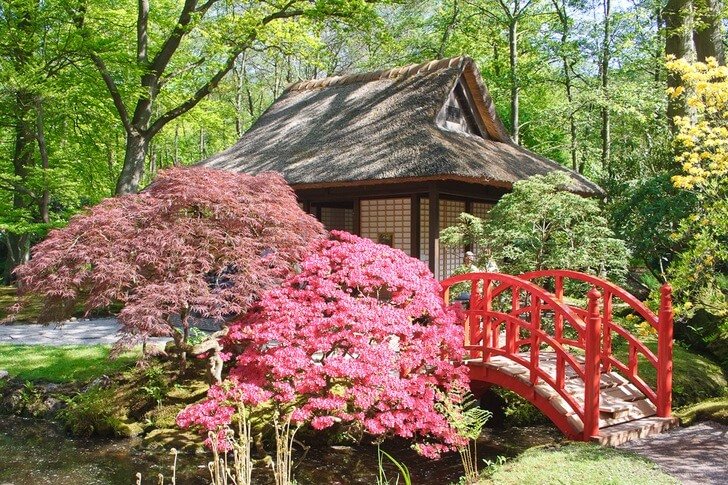The Hague, standing on the turbulent shores of the North Sea, is considered the political capital of the Netherlands. Here are the offices of such important organizations as the International Court of Justice, the International Criminal Court and the Permanent Court of Arbitration. Perhaps that is why The Hague is perceived as a strict and serious city where there is no place for entertainment.
But the first impression is wrong. Tourists here will find an incredible number of interesting museums, palaces, shady parks and even a real beach, no matter how strange it may be for a northern city. And yet, the Scheveningen district of The Hague is a prestigious resort with a well-maintained coastline, where you can have a great rest, enjoying the sea views and even sunbathe, provided that you are lucky with the weather.
What to see and where to go in The Hague?
The most interesting and beautiful places for walking. Photos and a short description.
- Peace Palace
- Scheveningen
- Piers Scheveningen
- Binnenhof
- Knight's Hall
- Noordeinde Palace
- Huis ten Bos Palace
- Old town hall
- Church of St. James
- Mauritshuis
- Park of miniatures Madyurodam
- Louvmann Museum
- Panorama of Mesdag
- Escher Museum
- Municipal Museum
- Muzeon
- Prison Gates
- Museum Sculptures on the Sea
- Circus
- Passage
- Amrath Kurhaus Grand Hotel
- Westbrook Park
- The Hague Forest
- Clingendale Park
- Japanese garden
Peace Palace
The palace was built in 1907-1913 at the expense of E. Carnegie, an industrialist and philanthropist from the United States. The idea of creating such a building appeared in the wake of numerous conferences and assemblies dedicated to world peace. The building was built in the Neo-Renaissance style according to the design of the French architect L. Cardonier. The palace houses a museum and a library containing a huge amount of materials on international law.
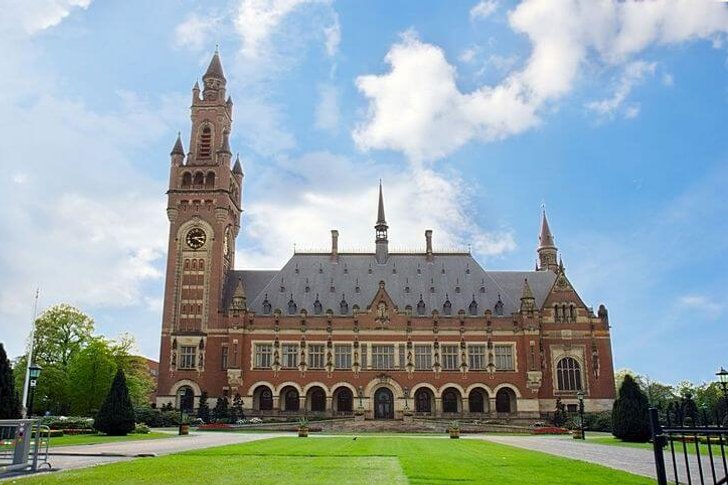
Scheveningen
Resort area of The Hague, located on the North Sea. It is famous for its long sandy beaches and suitable conditions for kitesurfing and windsurfing. On the territory of the district there are several interesting museums, an aquarium, a miniature park and a theater. In the 19th century, there was a fishing village on the site of the Scheveningen district, until one of the locals came up with the idea to offer rich townspeople to take salt baths away from prying eyes.
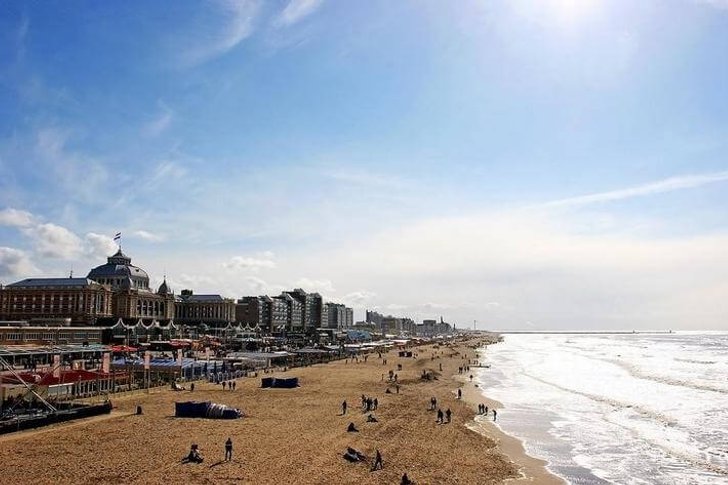
Piers Scheveningen
The pier is located in the area of the same name. It was included in the list of attractions in The Hague because of its unusual design. The pier has two levels. The lower one is a covered glass gallery, the upper one is an open observation deck. The end of the structure, resting against the sea, is divided into four parts - “islands”, where restaurants and shops operate. The pier also has a 60-meter observation tower, where there is an equipped place for bungee jumping.

Binnenhof
A complex of buildings that includes the residence of the Parliament and the Prime Minister of the Netherlands, as well as several museums (including an art gallery) and historical monuments. The construction of the Binnenhof began under Willem II in the middle of the 13th century. The main number of buildings included in the complex is built in a Gothic manner around the Hoffeyver Pond, a picturesque artificial reservoir dug back in 1350.

Knight's Hall
The Ridderzaal is a small Gothic mansion that is part of the Binnenhof architectural complex. It is used for royal receptions, solemn speeches by the monarch of the Netherlands, inter-parliamentary meetings and other public needs. Ridderzaal was erected under Floris V according to the design of G. van Leyden. The building got its name because of the large front hall, in which all events take place.
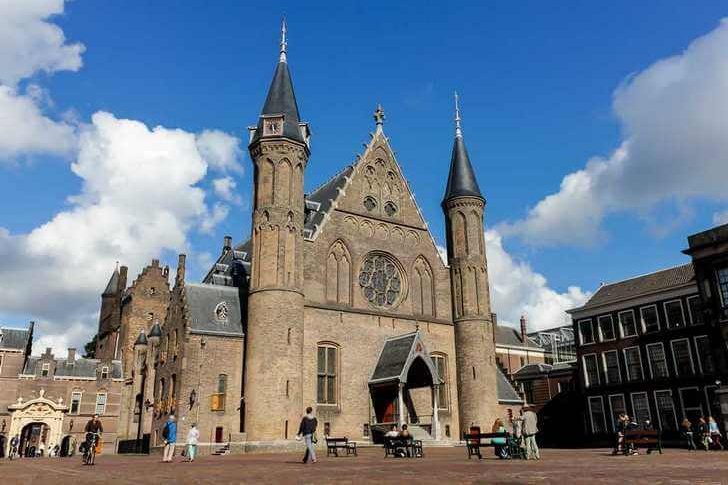
Noordeinde Palace
The official residence of the royal family. The castle was built in the middle of the 16th century and expanded at the beginning of the 17th century. The work was carried out according to the design of the Dutch architects P. Post and J. van Kampen, who worked in the style of classicism. Since 1815, after the liberation of the territory of the Netherlands from French domination, the royal residence was located in Noordeinde. Tourists can only freely enter the palace garden.
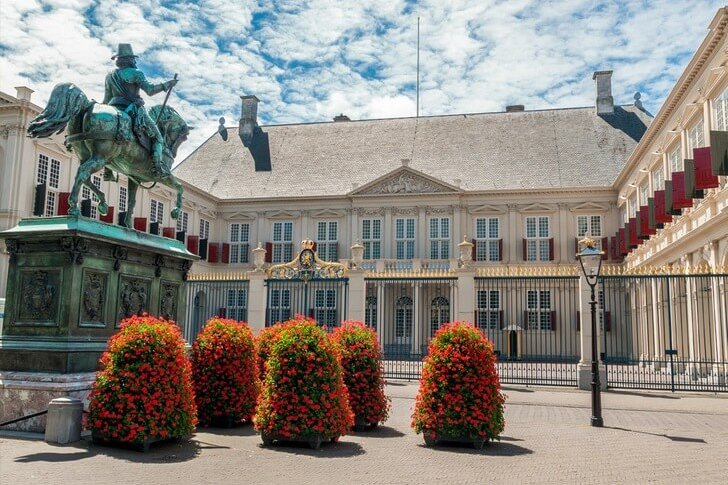
Huis ten Bos Palace
The building stands in the middle of the Haagse-Bos park in the northern part of The Hague (previously it was located outside the city). The palace is another active residence of the king. Monarchs have always preferred to spend more time in Huis-ten-Bos than in their other castles. The building is built in the classic Dutch style. Inside there is a magnificent hall of fame of the dynasty of the Princes of Orange, decorated with paintings by famous Dutch masters.
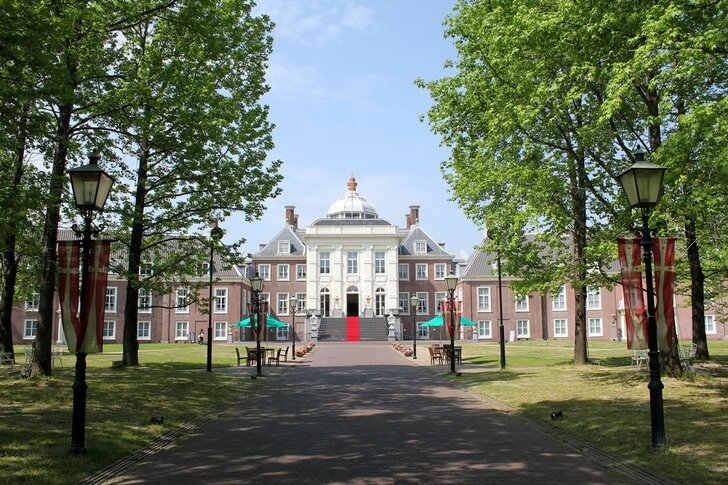
old town hall
The town hall was built in the 16th century in the Renaissance style. Previously, in its place was the count's castle. The city government meets in another building, where marriages are registered and birth certificates are issued. The town hall managed to avoid the destruction of the troubled period of the Dutch Revolution and retain its unique architectural appearance. Restoration and expansion of the building were carried out in 1882.

Church of St. James
One of the main Protestant churches in The Hague, the first mention of which dates back to the 13th century (at that time there was a wooden church on this site). The shape of the hexagonal church tower, in general, is not typical for the traditional architecture of the Netherlands, so the building stands out from the general background. The interior has preserved ancient stained-glass windows and an episcopal pulpit made in the 16th century.

Mauritshuis
An art gallery located on the territory of a small palace of the 17th century. The art collection was placed here in 1820 after the state bought the building from a private owner. The Mauritshuis collection contains works by Dutch artists whose work belongs to the "golden age" of Dutch painting - P. Potter, R. van Rijn, I. Vermeer, F. Hals.

Park of miniatures "Madyurodam"
The park is located within the resort area of Scheveningen. It is a typical Dutch city, scaled down to 1:25. Trains run here, people walk along the alleys of real parks, passenger and cargo ships go in improvised bays. Everything is real, only miniature sizes. "Madurodam" was established in 1952, since then it has been under the auspices of the ex-Queen Beatrix.
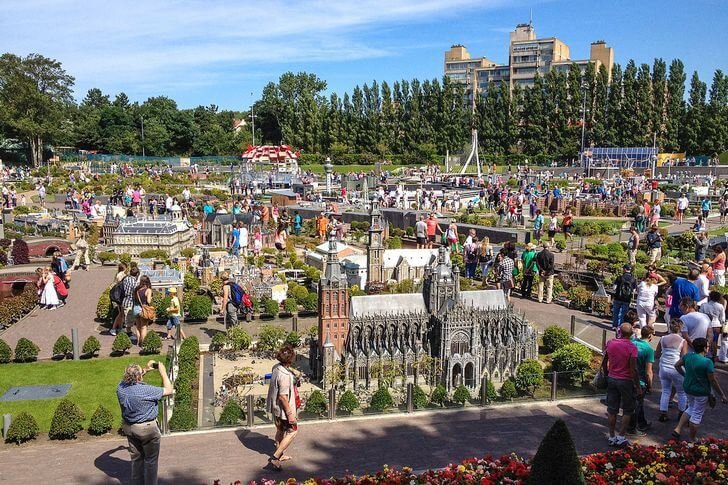
Louvmann Museum
The basis of the collection is a private collection of retro cars owned by the Louvmann family. More than 240 pieces are presented to the viewers, including rare items made in Holland in the last century. All cars are in working order, some of them have not even undergone restoration, as they have been preserved quite well.
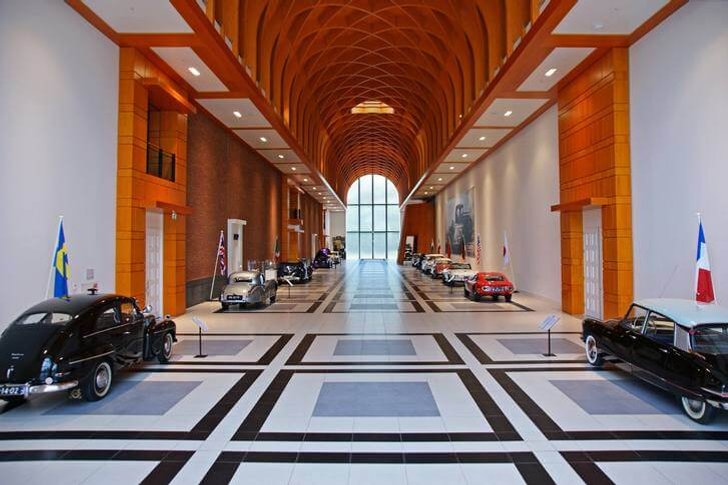
Panorama of Mesdag
A large panoramic canvas painted by the Dutch marine painter H. V. Meshad with the help of his students at the end of the 19th century. It depicts the fishermen's village of Scheveningen at a time when it was not yet a popular resort area. The painting is located in a building specially built for it. The grandiose canvas reaches 120 meters in length and 14 meters in height.
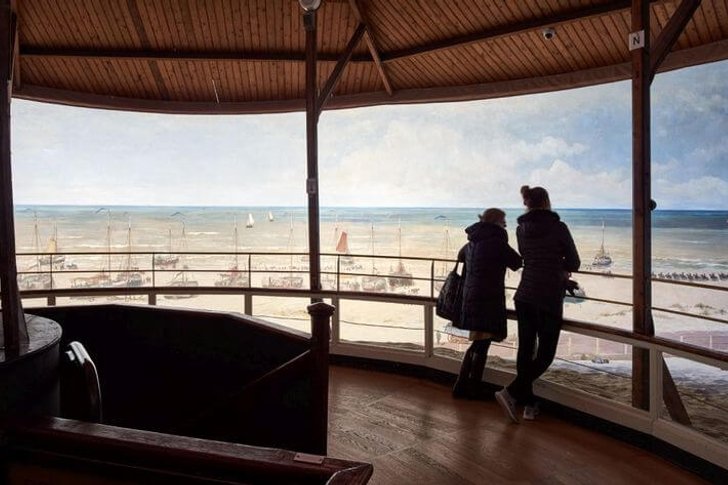
Escher Museum
The exposition of the museum is dedicated to the work of M. K. Escher, a famous Dutch graphic artist of the 20th century. A permanent exhibition of his work was organized in 2002 in the historic 18th century mansion where Queen Emma Wilhelmina Theresa lived until her death. The collection includes drawings, sketches and engravings created by the master in different periods of his work.
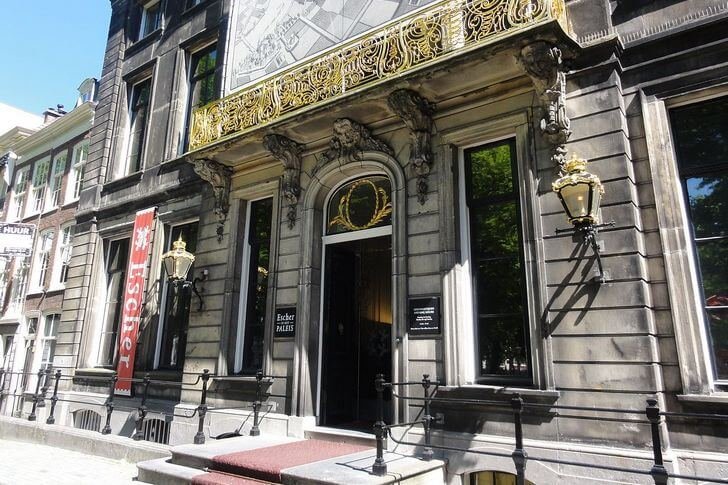
Municipal Museum
A whole museum complex, under the roof of which there are collections of paintings of the 19th-20th centuries, arts and crafts and contemporary art, as well as expositions dedicated to musical instruments and fashion. The City Museum was opened in 1935 in a building designed by H. P. Berlage. Today, his collection is considered one of the most significant in the Netherlands in terms of cultural value.

Muzeon
A scientific, educational and educational center for children, where young visitors get to know the biological and cultural diversity of the world. Among the exhibits are stuffed animals, tools of labor of ancient peoples, national costumes. The museum is intended for the whole family, but its collection will be primarily of interest to children aged 4-7, who during the tour try to play folk musical instruments, cook simple dishes, and also take part in fun games.

"Prison Gates"
In the 14th century, in the premises that were attached to the city gates, there was a prison for violators of the law awaiting trial. The dungeon existed until the beginning of the 19th century. In 1882 a museum was organized here. His collection consists of ancient torture instruments, as well as furnishings in which prisoners were kept. Visitors can walk through the gloomy cells and experience the creepy prison atmosphere.
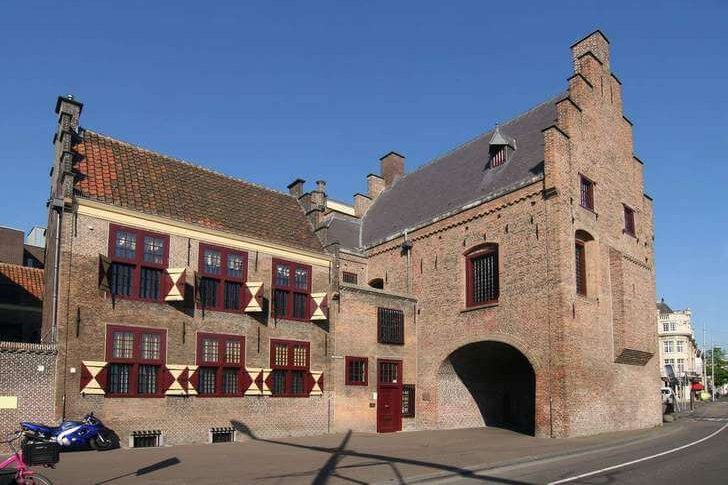
Museum "Sculptures on the Sea"
An open-air exposition consisting of original iron sculptures (some of the exhibits are kept indoors). Also in the museum there are specially designated places for the organization of temporary exhibitions. The collection was created in 1994. In 2004, the museum launched a research institute dedicated to the study of sculpture as an art form.
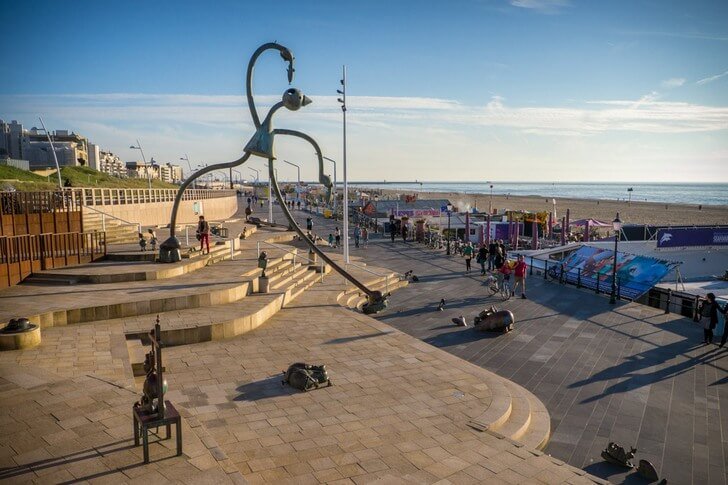
circus
The theater is located in the spa area of Scheveningen. It was erected at the beginning of the 20th century. Until the 1960s, circus performances were predominantly held here. As a full-fledged theater, Circus began to work only in the 1990s. The famous musical "Les Misérables" was shown as a premiere production. Since then, the theater has specialized in musical plays in this genre.

Passage
A trading house built in the Neo-Renaissance style in 1882. Boutiques and shops selling antiques, famous brand clothes, souvenirs, interior items, as well as small restaurants where you can relax in between shopping are located here. The building is covered with a glass dome and roof, the interior space is decorated with arched spans and columns.

Amrath Kurhaus Grand Hotel
The hotel is located in the Scheveningen district directly on the North Sea. The architecture of the beginning of the 20th century and aristocratic interiors, decorated with frescoes and paintings, are combined with modern renovation and excellent equipment of the rooms. Weather permitting, guests can enjoy breakfast on the terrace, which overlooks the rugged beauty of the North Sea landscape.
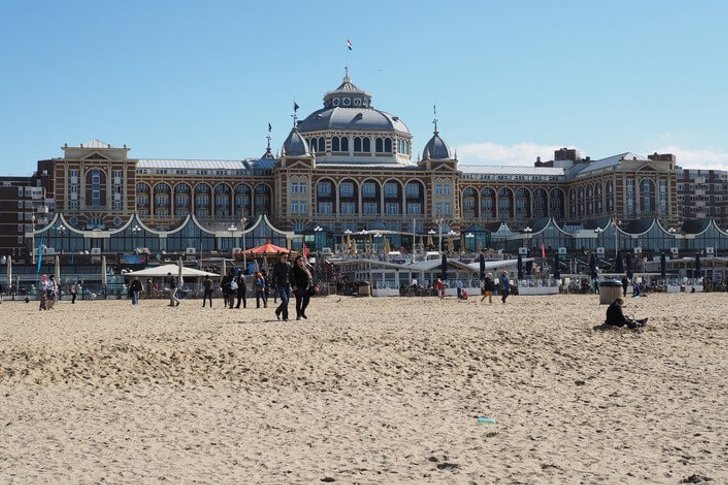
Westbrook Park
The park was laid out in Scheveningen in the 1920s according to the design of the designer P. Westbrook. In summer, a huge number of roses bloom here, and the space is filled with their rich aroma. During this period, there are quite a lot of visitors to the park, although in other seasons it is considered a quiet and peaceful place. There is a lake, playgrounds and well-groomed walking alleys. Restaurants and coffee houses are available for guests.

The Hague Forest
Park in the central part of the city, spread over an area of 100 hectares. It is a popular spot for invigorating morning runs and relaxing afternoon walks. The Hague Forest is often called "a thicket a step away from civilization", as here you can safely hide from the annoying city bustle. Having turned off the beaten city routes into the park, the tourist finds himself surrounded by greenery, flowers and birdsong.

Clingendale Park
Clingendale is a 17th century estate surrounded by a classic French park. The territory belongs to the city, so free passage is open for tourists. The green zone is divided into several parts, which include the Dutch and Japanese gardens, a rose garden, lawns of rhododendrons, forest land and pasture. Walking paths are laid along the park alleys, along which it is pleasant to walk on a fine day.

Japanese garden
The garden is part of Clingendale Park. It was arranged by a Dutch duchess, who at the beginning of the 20th century brought plants and decorative elements from Japan to equip the park. The garden is open only one and a half months a year from late April to mid-June, as its delicate flora requires special care and protection, especially in unusual climatic conditions.
